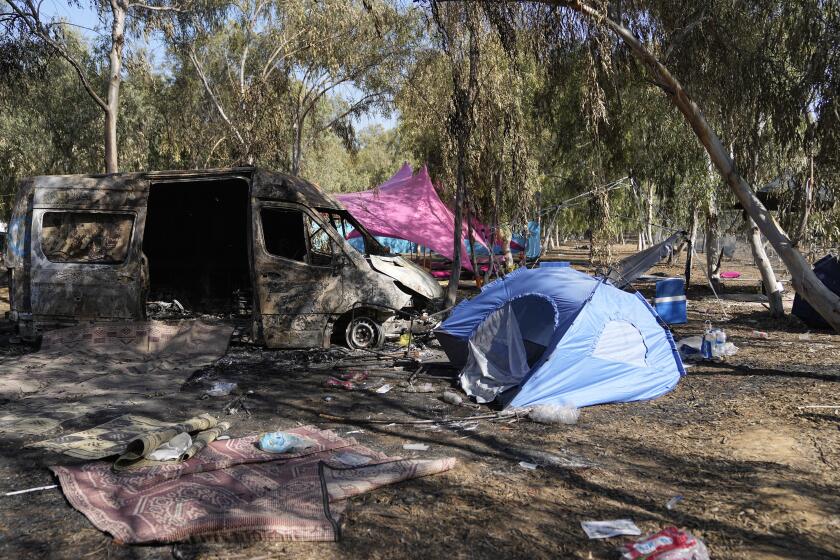Law and disorders
In the 1960s, California led the nation in psychiatric deinstitutionalization. Today, the failure of that policy can be seen on the streets of every major city in the state.
The evidence is overwhelming that when untreated people with severe mental illness are left on their own, tragedies happen. Yet an estimated 1.5 million individuals with severe mental illness go untreated in the U.S.
Take the case of Terry Jackson, a 21-year-old schizophrenic man who was killed by San Bernardino police officers last year after they found him agitated and behaving bizarrely in a park. Jackson’s mother later noted that when her son didn’t take his medication, “he would start talking to aliens.”
Or the case of Adrian Bonadie, a 34-year-old Montclair man with schizophrenia who stands accused of shooting and killing his parents. According to an Associated Press report, Bonadie’s sister told police at the time of his arrest last year that he was extremely paranoid and believed people were trying to poison him. She said he refused to take his medication. Bonadie pleaded not guilty to charges of first-degree murder.
And then there’s the case of 90-year-old Harry Gluck and his 77-year-old wife, Jean, who were hacked to death in their Carlsbad home last year. Their 44-year-old son, Dennis, was charged with their murder and pleaded not guilty. According to news reports, Dennis has schizophrenia but didn’t take medication. In an affidavit seeking a restraining order filed years before his death, Harry Gluck wrote that his son had consulted psychiatrists but always stopped when doctors wanted to prescribe medication for him.
Both Adrian Bonadie and Dennis Gluck were found by the courts to be incompetent to stand trial. The proceedings against them have been suspended while they receive treatment at Patton State Hospital.
If only Jackson, Bonadie and Gluck had been ordered to receive treatment before these tragedies occurred.
Simply throwing open the doors of mental hospitals and assuming that mental patients will find appropriate treatment in their communities is absurd. Many people with severe mental illness are too sick to recognize that they need help and so won’t seek out or accept medical intervention.
In California, there is a ray of hope in cases in which ill people refuse treatment. In 2002, the Legislature passed “Laura’s Law,” which allows for court- ordered compulsory treatment for some of the most severely mentally ill individuals. But counties have been very slow to embrace the law.
Laura’s Law was modeled after “Kendra’s Law” in New York, which has had great success in getting treatment for severely mentally ill people. Both statutes were named after young women killed by men with severe, untreated mental illness and provide for court-ordered intervention for people too sick to seek treatment on their own.
Research by the New York Office of Mental Health shows that during the 10 years Kendra programs have been operating, more than 9,000 individuals have been helped. Participants in the program have seen an 83% decline in arrests, an 87% decline in incarcerations, a 74% reduction in homelessness and a 77% reduction in hospitalizations.
Independent researchers from Duke and Columbia universities found that Kendra’s Law reduced violence, suicide and victimization of its participants. It also reduced the social and economic costs associated with the relapses, hospitalizations and arrests that plague so many people with severe mental illness.
Could such a program have prevented the tragedies that struck the Gluck, Jackson and Bonadie families? Quite possibly. All three families were worried in advance about the worsening mental states of their ill loved ones. That deterioration might have been prevented with proper treatment, and Laura’s Law would have allowed professionals to intervene swiftly and to compel treatment if necessary.
So why hasn’t the law been widely implemented? Unfortunately, it is up to the discretion of counties in California whether or not they participate, and Laura’s Law sets up barriers to participation. When the law was being written, opponents of court- ordered treatment demanded and got language inserted that requires counties wanting to participate to guarantee that funding for Laura’s Law will not result in reduction of existing voluntary services. So far, only two boards of supervisors have had the political guts to make such guarantees -- Nevada and Los Angeles counties. Both have started programs that are promising, but they are still very small.
Mentally ill Californians -- and their families -- deserve more. And they just might get it if counties throughout the state would implement Laura’s Law.
Carla Jacobs, a board member of the Treatment Advocacy Center, is a veteran mental health activist.
More to Read
Start your day right
Sign up for Essential California for news, features and recommendations from the L.A. Times and beyond in your inbox six days a week.
You may occasionally receive promotional content from the Los Angeles Times.






